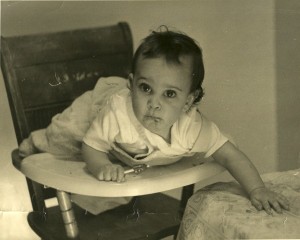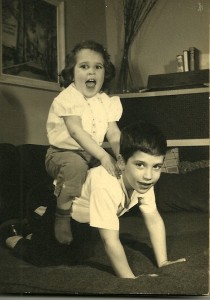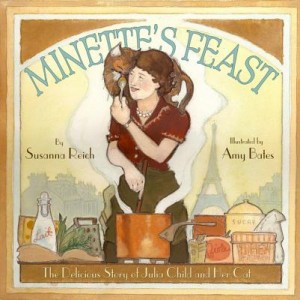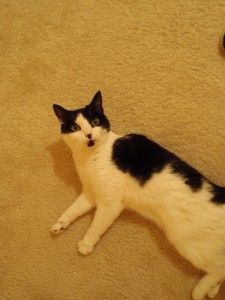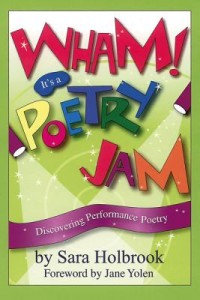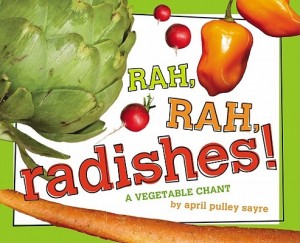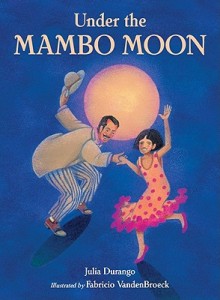Maurice Bernard Sendak (June 10, 1928 – May 8, 2012)
Readerkidz Deb Gonzales says: “Years ago, I directed a large summer arts camp for kids ages 3 to 10, the theme of which was “Let the Rumpus Begin!” For the program finale we performed a play based on Where the Wild things Are. As costumes, each child–75 of them–had construction paper triangle claws taped to their finger and toe nails. We also taped larger construction paper triangles to the tips of their ears and made Styrofoam fangs. Oh, boy! When it came time for those wild things to roar their terrible roars and gnash their terrible teeth it was deafening! Their roars were so wonderful, we had to repeat them a time or two.”
This was Sendak’s genius. He understood, tapped into, and rendered these and so many other childhood emotions perfectly.
Where The Wild Things Are came out before the Beatles made their first US tour and was initially banned by many libraries. My mom eventually read it to my brother and me and I promise I can still remember how it felt to my five year-old self (and still). It made perfect sense and was deeply reassuring, entertaining and true on an emotional level that kids know intuitively better than adults. I was so impressed that Max tamed all those scary, big wild things. That was empowering. I took solace that even after all his mischief, his dinner–still hot–was waiting for him when he came home to “where someone loved him best of all.”
The Contemporary Jewish Museum of San Francisco recently had an excellent exhibit of Sendak’s work and life. He was quoted there as saying that the Wild Things he drew were simply how he remembered his relatives as a young child; large, snaggle-toothed, and scary, fawning over him and threatening to “eat him up.” Of course! Most kids can relate.
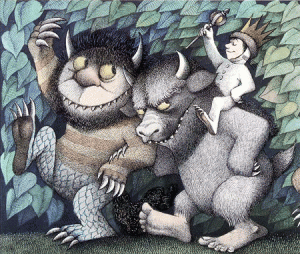 The truth of WTWTA is simply a story about a boy whose anger feels unmanageable. And it ends with forgiveness and love. Yet, many adults were threatened mightily by it when it appeared. A few still are.
The truth of WTWTA is simply a story about a boy whose anger feels unmanageable. And it ends with forgiveness and love. Yet, many adults were threatened mightily by it when it appeared. A few still are.
The really scary truth is that we humans, children and adults, are all wild things.
Adults often think that children’s literature should protect kids’ innocence. While none of us would advocate giving kids inappropriate material for their age, I completely agree with Sendak’s sentiment that “sugar coating” is what ADULTS want, not children. Sendak never sugar-coated. He didn’t (need to) make things more scary than necessary, but he wrote and illustrated the truth in an honest, humorous way that speaks directly to even the youngest kids.
He understood a fundamental truth about children. Art Speigelman quoted Sendak as saying: “ (As a kid) I knew terrible things. But I knew I mustn’t let adults know I knew. It would scare them.”
Readerkidz Nancy Bo Flood, not only a children’s writer but a psychologist, says, “Indeed, (this quote is) so true, whether the truth is about family discord, alcoholism, abuse…the child always knows and they do try to protect the people they love.”
[Nancy also said, “To read the so many beautiful tributes to Sendak…has been both an inspiration and so deeply satisfying. Books do make an important difference.” Great books make a great difference.]
We’ll close with what Sendak told Terry Gross on FRESH AIR in a terrific 2011 interview, because it’s quintessential, and it made me snort coffee out my nose.
A little boy… sent me a charming card with a little drawing. I loved it. I answer all my children’s letters — sometimes very hastily — but this one I lingered over. I sent him a card and I drew a picture of a Wild Thing on it. I wrote, “Dear Jim: I loved your card.” Then I got a letter back from his mother and she said, “Jim loved your card so much he ate it.” That to me was one of the highest compliments I’ve ever received. He didn’t care that it was an original drawing or anything. He saw it, he loved it, he ate it.”









